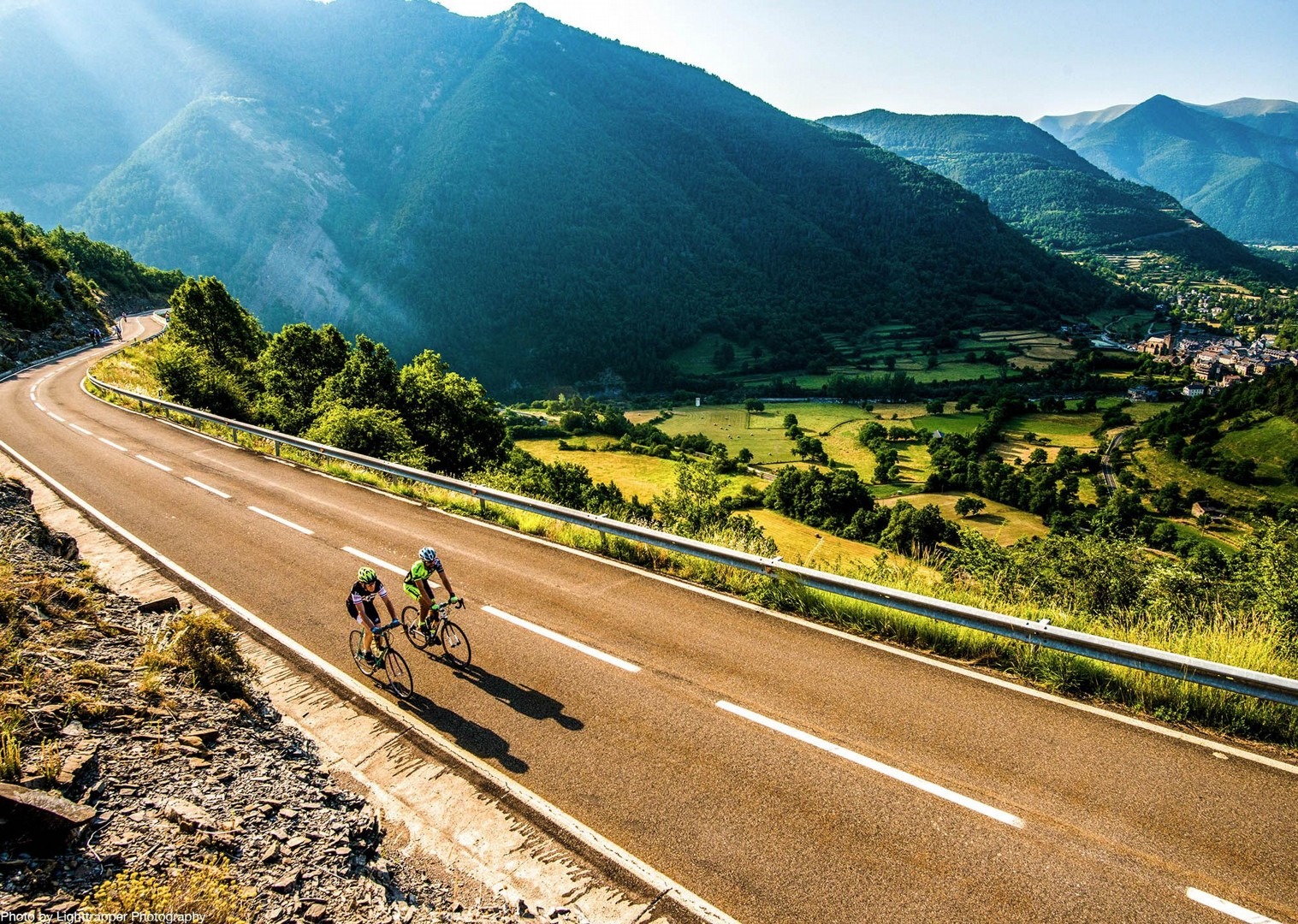The majestic Pyrenees mountain range, a natural border straddling France and Spain, has long been a magnet for cycling enthusiasts seeking both challenge and charm. With its sprawling landscapes, diverse climates, and rich cultural tapestry, the region offers some of the most exhilarating road cycling adventures in Europe. Skedaddle offers two distinct road cycling voyages through this rugged terrain: The Trans Pyrenees Challenge on the French side and the Spanish Pyrenean Traverse. Each journey promises a unique exploration of the Pyrenees, but how do they compare? Let’s dive into the cycling experience, culture, climate, and landscapes of the French and Spanish Pyrenees to help you choose your next cycling adventure.
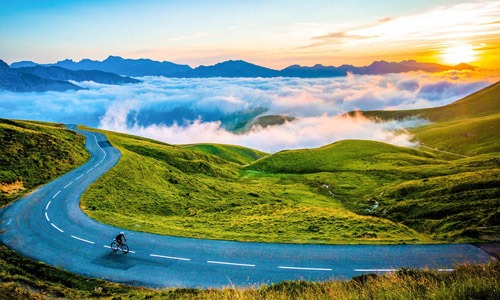
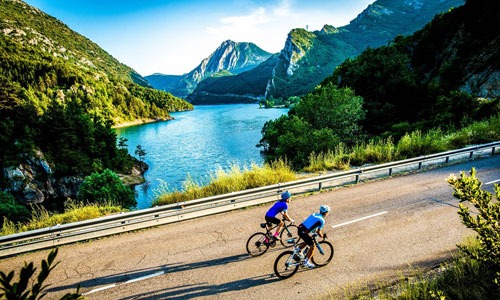
The Pyrenees, a formidable natural barrier stretches approximately 430 km between the Atlantic Ocean and the Mediterranean Sea. It not only separates the Iberian Peninsula from the rest of continental Europe but also houses rich, distinct histories, cultures, and architectural styles on their French and Spanish flanks. Geography has played a crucial role in shaping the identity of each side of the Pyrenees. Though they share a mountain range, the French and Spanish sides of the Pyrenees are distinguished by profound differences in their culture and terrain.
Thanks to the Tour de France the French climbs of the Pyrenees have attracted more cycling legends and are perhaps more familiar to cycling fans but while France’s iconic climbs like the Tourmalet and Aubisque have deep roots in Tour de France history, Spain’s challenges like the Puerto de Portalet and Puerto de Larrau hold their own, with steep gradients, stunning scenery and dramatic contributions to Vuelta a España lore.
Let’s take a look.
The cycling experience
Trans Pyrenees Challenge (French Side)
The Trans Pyrenees journey is a testament to France’s rich cycling pedigree, often featured in the Tour de France. Cyclists can anticipate smooth tarmacs winding through serene alpine meadows, alongside towering peaks and down into verdant valleys. This journey is characterised by its challenging climbs and exhilarating descents, offering cyclists the chance to tackle famous cols and soak in the breathtaking vistas.
On Skedaddle’s Trans Pyrenees Challenge you will experience iconic climbs such as the Col du Tourmalet, the highest paved mountain pass in the French Pyrenees and one that has been featured in the Tour de France more times than any other climb.
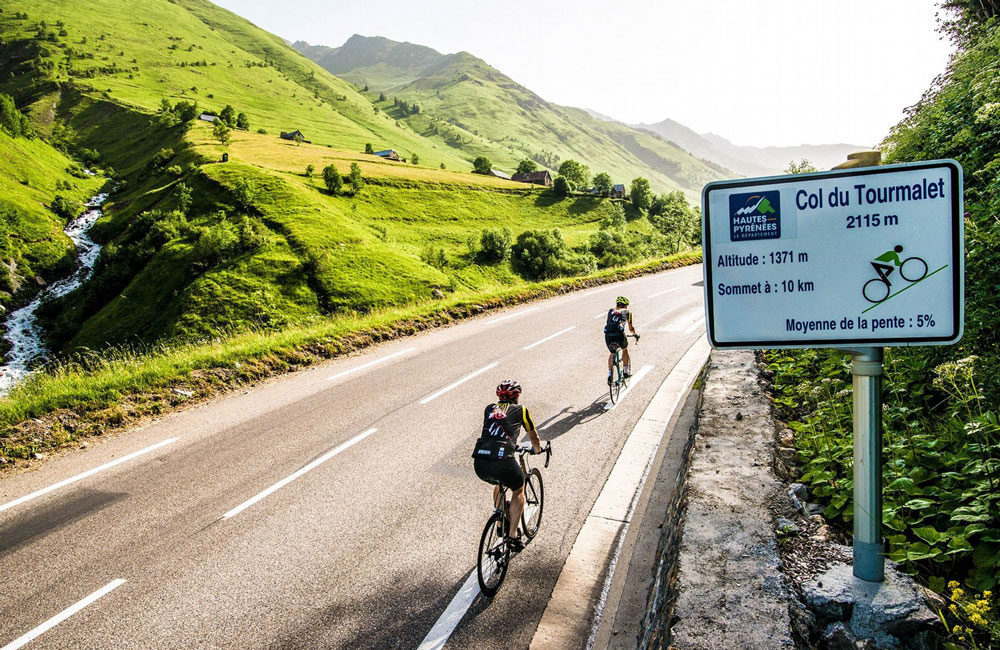
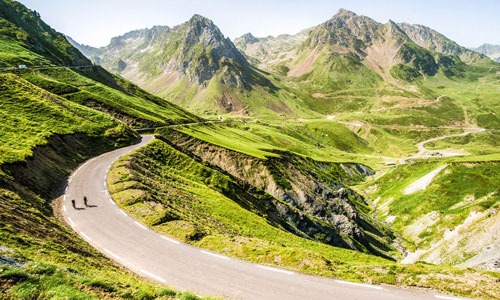
Pyrenean Traverse (Spanish side)
On the Spanish side, the landscape transforms, and so does the cycling experience. The Spanish Pyrenean Traverse cuts through more rugged and arid terrains, with routes that are less travelled but equally captivating. The Spanish slopes offer a raw, untamed cycling adventure, with steeper ascents and wilder descents. Cyclists here will find less traffic and more opportunities to immerse themselves in the natural beauty of the Pyrenees, making it an ideal choice for those seeking solitude and a connection with nature.
Experience the stunning scenery of the Puerto de Portalet. A long, steady ascent, it stands out as different to other steep Spanish climbs as a test of endurance rather than sheer climbing power.
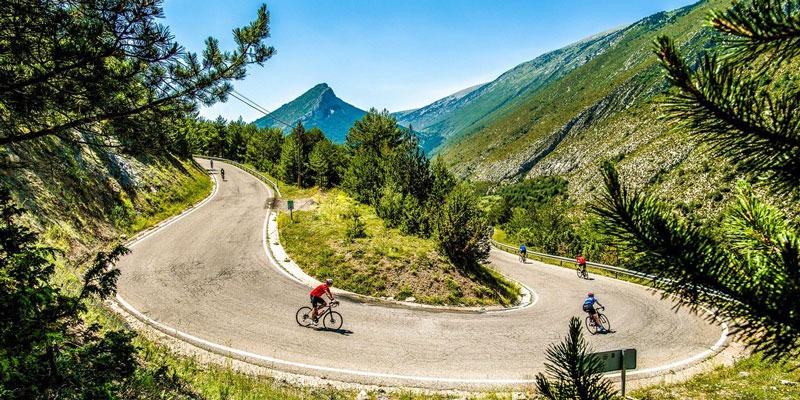
Culture
French Pyrenees
The French side of the Pyrenees is dotted with quaint villages and bustling market towns. The culture in the French Pyrenees is a blend of French and Occitan influences, Occitan is still spoken in parts of the region. Gastronomy here emphasises hearty mountain cuisine, with dishes like Cassoulet and Confit de Canard awaiting those looking to replenish their energy after a day on the road.
Architectural styles in the French Pyrenees include Romanesque and Gothic churches and cathedrals, fortified castles, and the distinctive ‘bastides’ – medieval new towns built as grids. The area also features thermal baths where you can bathe your tired cycling legs, such as in Ax-les-Thermes, that dates back to the Roman times.
France has a strong work-life balance, with laws in place governing work hours and vacation days. Closing hours for shops and restaurants are closely adhered to with very little open on a Sunday, even in larger towns. Lunch time closing, something we have really forgotten about in the UK, can still catch out the unwary looking for an open bakery between 12-2pm. Evening meals are later than most of Europe, though not as late as Spain.
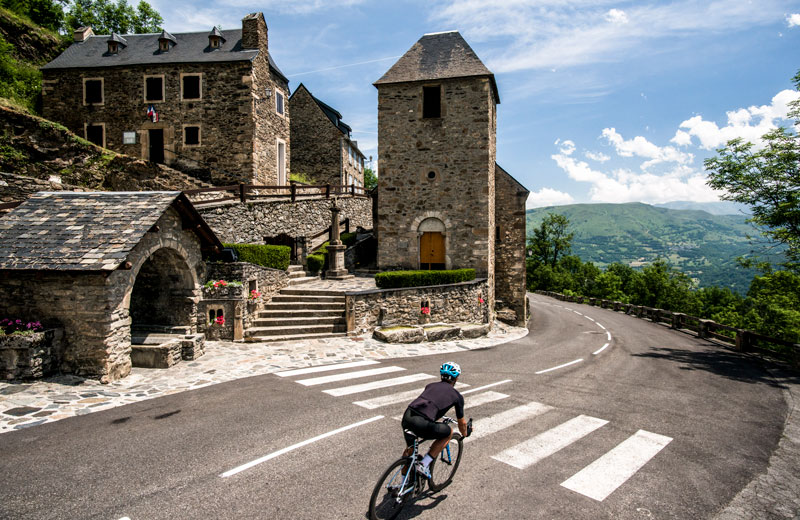
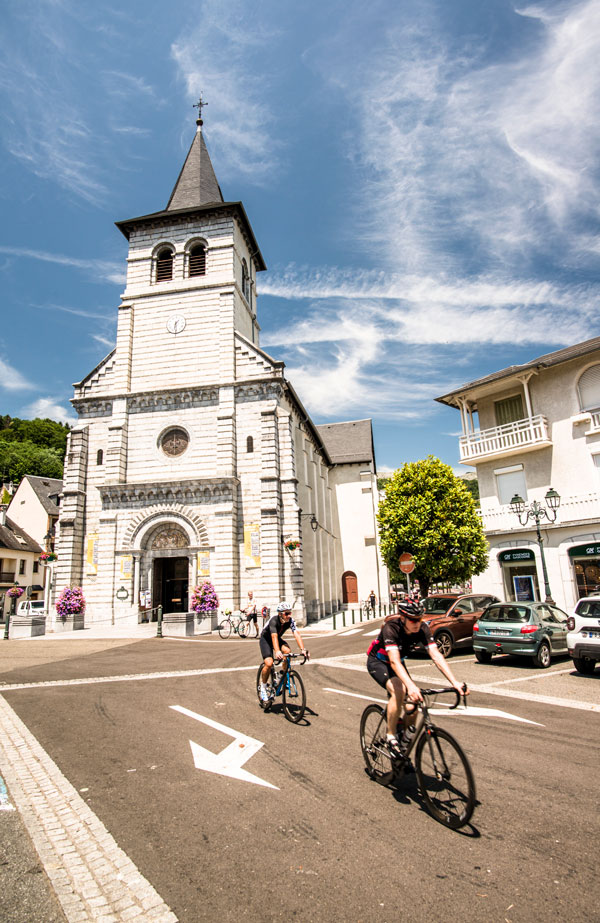
Spanish Pyrenees
The Spanish Pyrenees are culturally diverse, with influences from Basques, Catalans, and Aragonese peoples. Each of these cultures brings its own language, traditions, and festivals to the region. The region is renowned for its vibrant fiestas, flamenco music, festivals and dances, such as the ‘jota’ in Aragon. Influenced by the convergence of Spanish and Catalan influences, the food here is hearty with grilled meats, sausages, and cheeses designed to provide sustenance through cold winters and active days, perfect for famished cyclists. Groups especially enjoy the night eating Pintxos in the coastal town of Honarribia.
The Spanish Pyrenees are renowned for their Romanesque architecture, particularly visible in numerous small churches and monasteries dotting the landscape. Buildings feature characteristic thick stone walls, small windows, and semi-circular arches, designed to withstand the harsh mountain weather, explore the medieval streets of beautiful Ainsa and feel transported in time.
The Spanish have a unique schedule that includes a mid-day siesta in many areas (though this is becoming less common in big cities). Meal times are later, with lunch around 2-3 pm and dinner often after 9 pm. Social life is vibrant and outdoors-focused, with a strong café culture.
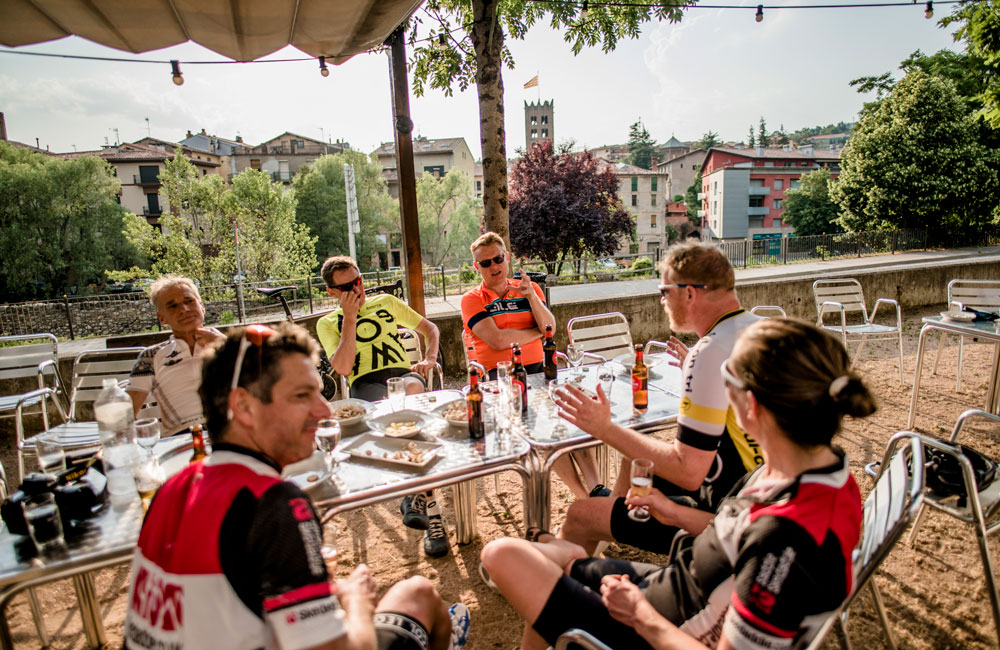
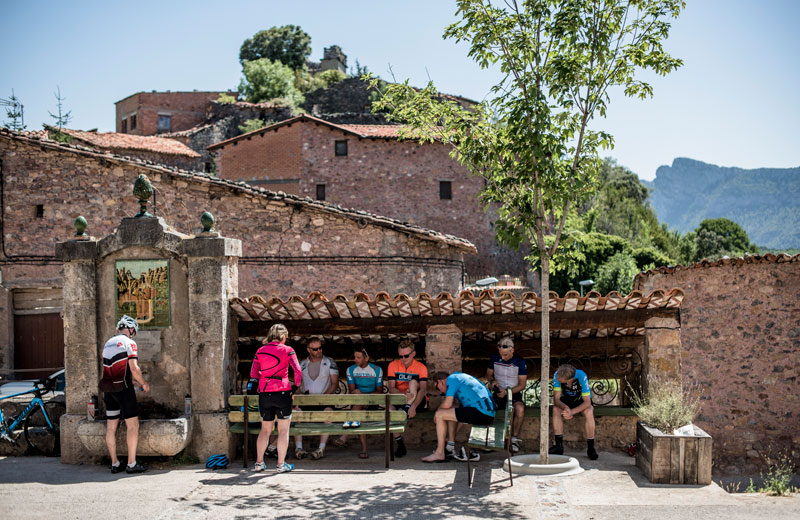
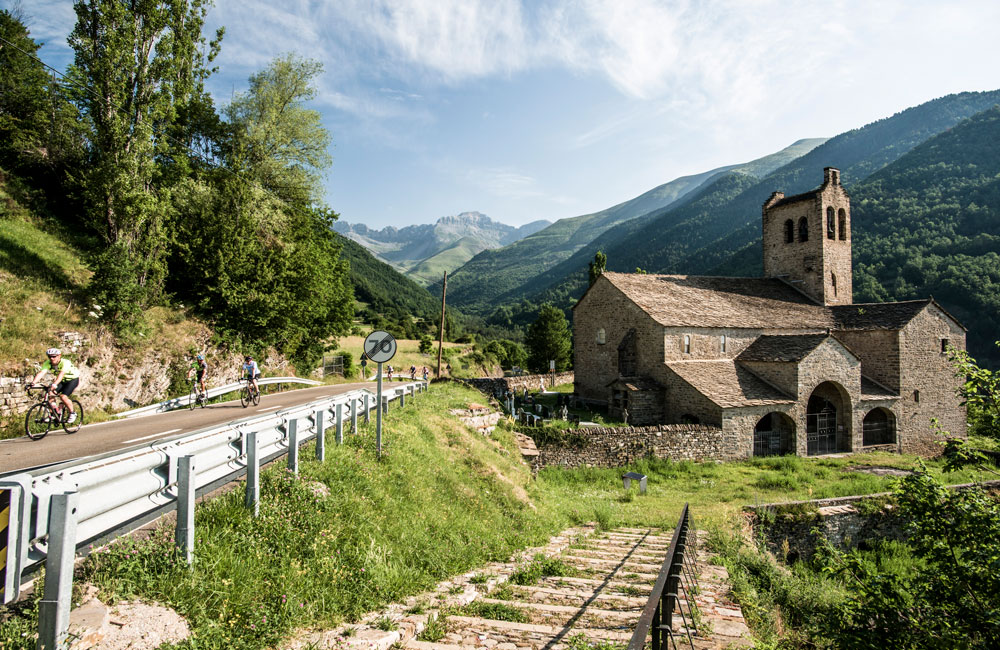
Climate
Both sides of the Pyrenees can get very warm in the summer months. Slightly more rain falls on the French side of the Pyrenees while the Spanish side sits in the rain shadow making it a touch drier on average. Whichever side you ride you are likely to encounter a mix of sunny days, hot weather and sporadic rain. As with all mountain landscapes weather can change rapidly and preparation is essential with riding plans being adapted where necessary to manage changes in conditions.
Every way an adventure
Whether you choose the Trans Pyrenees Challenge through France or the Spanish Pyrenean Traverse, you are guaranteed an unforgettable cycling adventure with us at Skedaddle. And to maximise the experience both of these trips dip a little into the other country so you can get a short experience of what lies on the other side of the border. On the Spanish Pyrenean Traverse we tackle the Puerto de Somport heading over the border into France where we spend the evening near to the small town of Escot. On the French Trans Pyrenees we ride the Col du Portillon which summits on the border between France and Spain and delivers you to the Catalonian town of Bossost where we will spend a Spanish flavoured evening.
Both destinations offer a unique blend of challenging routes, stunning landscapes, rich cultures, and distinct climates, catering to a wide range of preferences. Ultimately, the choice between the French and Spanish sides of the Pyrenees will come down to what you seek from your cycling holiday – be it the polished charm of France or the raw beauty of Spain. With Skedaddle, adventure awaits at every turn.
